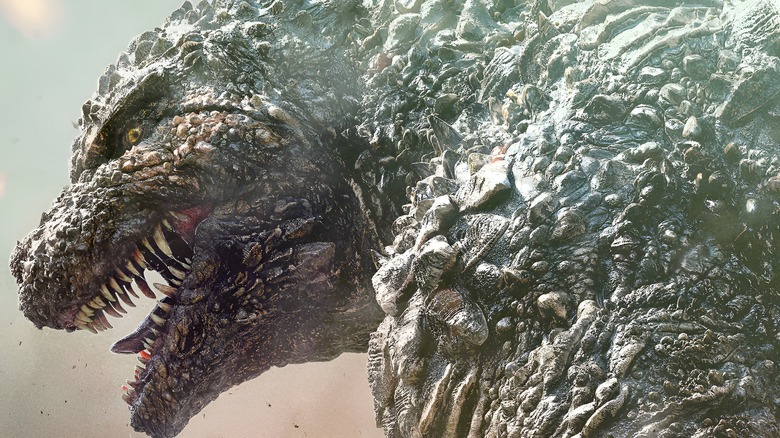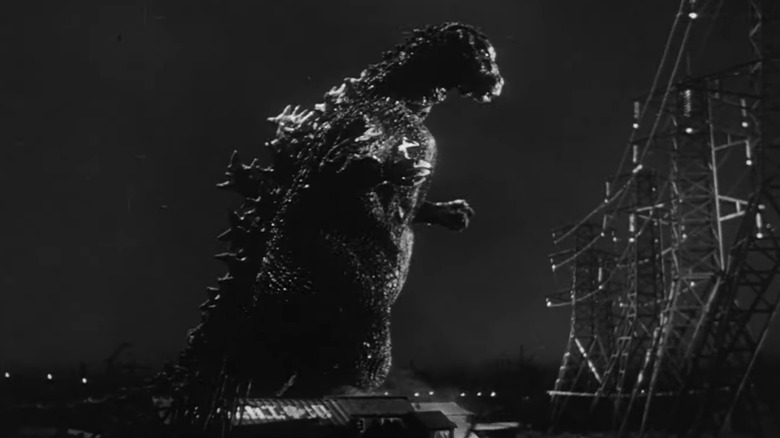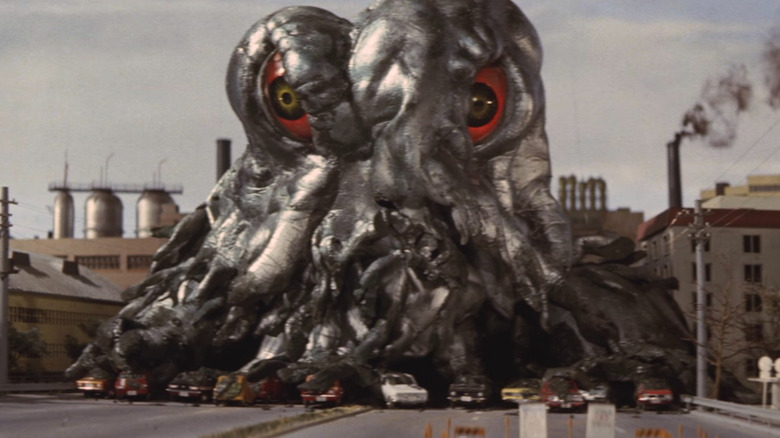Godzilla: Minus One's Plot Teases The Series' Original Monster - Humans
With the recent teaser release for "Godzilla Minus One," fans are preparing themselves for more city-stomping action. While newcomers to the franchise may be familiar with the image of Godzilla laying waste to major cities, what may not be as apparent are the tragic origins behind this concept.
Coming out less than a decade after the devastating U.S. atomic bombings of Hiroshima and Nagasaki, Ishiro Honda's 1954 "Godzilla" was made as a response to this tragedy. Following the war, Japanese filmmakers were restricted from producing content relating to the subject. So rather than directly addressing the topic, the team chose to use Godzilla as a metaphor for the atrocities brought upon by nuclear warfare and mankind's ignorance.
Much of this can be seen in the film's imagery, from Tokyo being absorbed in flames to the opening showcasing the destruction of the fishing boat, the latter of which is an explicit reference to the American hydrogen bomb test that affected the Lucky Dragon No. 5 fishing boat. Even many of Godzilla's trademark features are rooted in this ideology, such as his radioactive atomic breath, indestructible nature, and rough skin meant to look like the keloid scars of bomb victims.
"Godzilla Minus One," which has a dark meaning to its title alone, is set in post-war Japan and will have Godzilla as a destructive force, making it many Western fans' first time experiencing the franchise's darker side. If you're curious why American audiences aren't as accustomed to seeing Godzilla in this light, there's a good reason for it.
Americans have undermined Godzilla's potent allegory from the beginning
When "Godzilla" was released in November 1954, the film became a box-office smash in Japan, with viewers struck by its evocative imagery and themes. When the time came to bring the monster movie out West, however, audiences got a very different perspective of the kaiju king.
In 1956, the film was released in the United States as "Godzilla, King of the Monsters!" The new cut heavily altered "Godzilla" in ways that would leave a permanent mark on the franchise's legacy in America. Along with new scenes featuring "Rear Window" star Raymond Burr as a news reporter chronicling the monster's rampage, the film did away with many moments that explicitly referenced the bomb, including the heart-wrenching hospital scenes and Dr. Yamane's (Takashi Shimura) final line warning about the dangers to come if nuclear testing continues. By doing so, Toho's original vision was stripped down to a basic monster movie, resulting in "King of the Monsters!" being panned by critics.
Similar criticisms can be made about later American efforts. The 1998 version of "Godzilla" explains that the monster originated from bombings by the French, while the Legendary MonsterVerse version of Godzilla is a natural occurrence that the military aims to destroy with nuclear weapons in the 2014 film. So long as America downplays its involvement in birthing such atrocities, Godzilla's image will never go beyond a city-smashing monster-fighter. And even as the franchise took a tonal turn, the later Japanese installments found ways to evolve Godzilla's thematic potential.
Later Godzilla movies implemented their own social commentary
As Godzilla evolved in the years following his 1954 debut, the monster began to take on a more heroic persona, with his films centering more on bombastic monster battles. While it may be easy to dismiss these entries, they too aimed to reflect Japan's evolving social and cultural status.
Installments such as "King Kong vs. Godzilla" and "Mothra vs. Godzilla" act as light-hearted satires of the commercial and entertainment industries of the era. The alien invasion plots of "Invasion of Astro Monster" and "Destroy All Monsters" communicate ideas about the state of international relationships in post-war Japan. Even "All Monsters Attack," often considered one of the franchise's worst, acts as a love letter to the latchkey kid generation that was prevalent in Japan following World War II.
1971's "Godzilla vs. Hedorah" is an especially standout entry in this regard. The film, which sees Godzilla take on an alien creature mutated by human pollution, was a not-so-subtle attack on Japan's issues at the time stemming from a rise in industrialization. Like the original "Godzilla," the film makes numerous references to real-life events and imagery, with Hedorah transforming into various aquatic, land, and flying forms that wreak havoc on the environment and cause health issues to thousands of citizens.
Whatever topic is relevant at the time, the "Godzilla" franchise will find inventive ways to blend them with high-flying kaiju action. And with "Godzilla Minus One," that tradition doesn't seem to be going anywhere.


